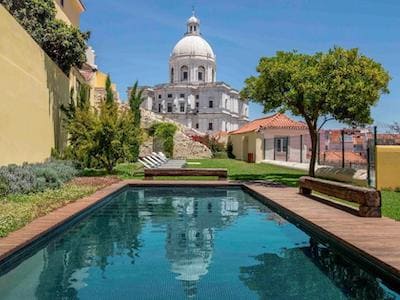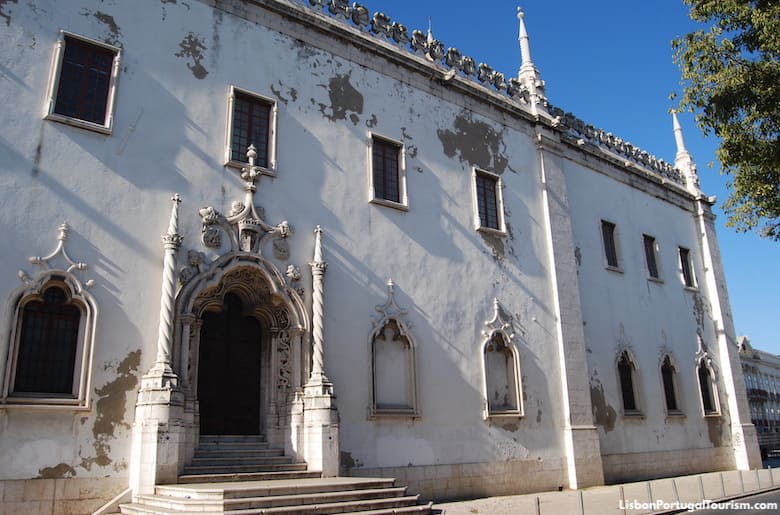
A 16th-century convent is now the National Tile Museum
Tile art is a common feature throughout the Mediterranean, but only Lisbon has a museum exclusively dedicated to it. It’s a must-see, one-of-a-kind attraction, housed in a magnificent old convent from 1509, and with a collection featuring pieces going back to the 1400s. It explains the origins and evolution of the art in Portugal, which ended up being the country with the vastest and most innovative uses of tiles.
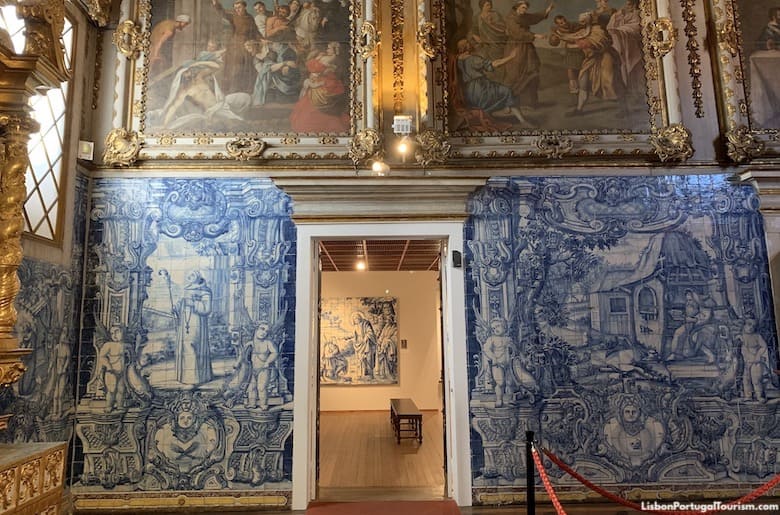
Tile panels and paintings from the old convent that is now the Tile Museum
From the old convent remains a small Manueline (a Portuguese Gothic and Renaissance style) cloister and a stunning church, which makes the museum one of Lisbon’s most beautiful sights. The church’s tile panels are among the main highlights of the collection, and the gilded woodwork is one of the finest of several exceptional examples of the kind in the city. The paintings above the tile panels are by Cristóvão Lopes and André Gonçalves, important painters from the 16th and 18th centuries.
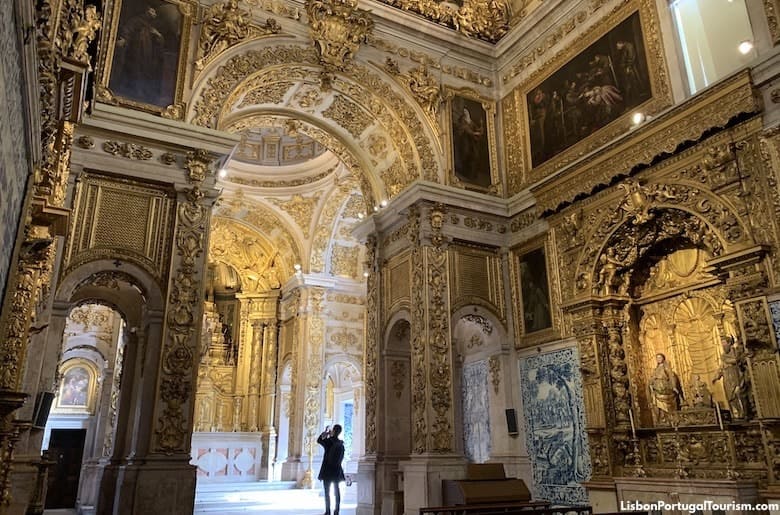
The stunning church is one of Lisbon's most magnificent sights
The oldest pieces on display feature geometric patterns and came from Moorish-influenced southern Spain, while the most striking are the Chinese-inspired blue-and-white Dutch and Portuguese panels from the baroque period. They originally adorned palaces, convents, and private homes, while some of the more recent works were donated by artists.
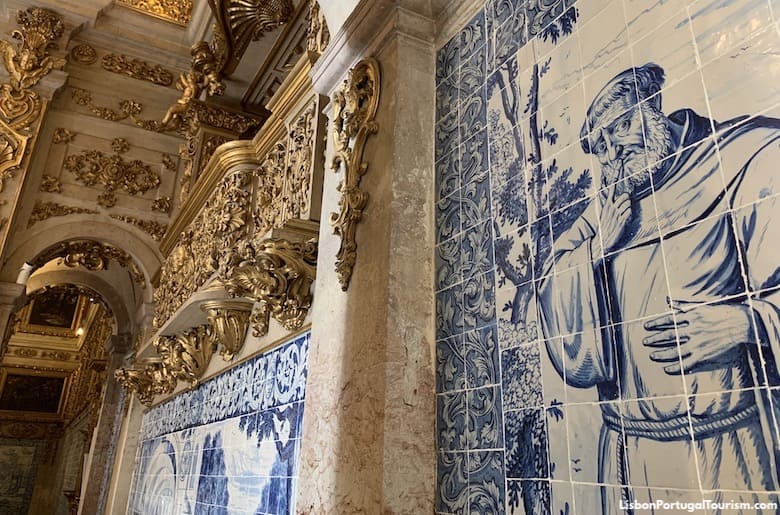
The church features Dutch tiles
One of the highlights is the altarpiece of "Our Lady of Life," considered one of the first masterpieces of tile art. Created in 1580, using a total of 1498 tiles, it belonged to a church that once stood by the castle. It represents the birth of Jesus, using shading to create the illusion of depth.
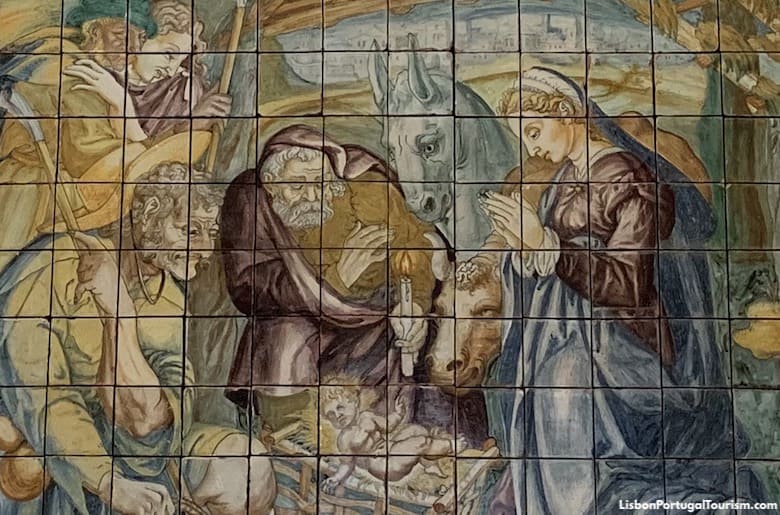
The "Our Lady of Life" altarpiece from 1580, one of the first masterpieces of tile art
Also noteworthy is the panel known as “The Chicken’s Wedding,” an enigmatic piece from 1665. What it truly represents is unknown, but it depicts a chicken in a carriage -- it’s the only bird in the entire painting, as all other characters are monkeys. It most likely had a satirical purpose, with the monkeys used to ridicule the basic instincts of human beings. The chicken may represent a queen.
From a more recent period is the “Portrait of a Lady,” which mixes the neoclassical and the romantic styles. It dates from 1820, and stands out for its extraordinary transparency effect (a veil over the face), which is so difficult to achieve in tile painting, as it’s impossible to guarantee the final result after heating.
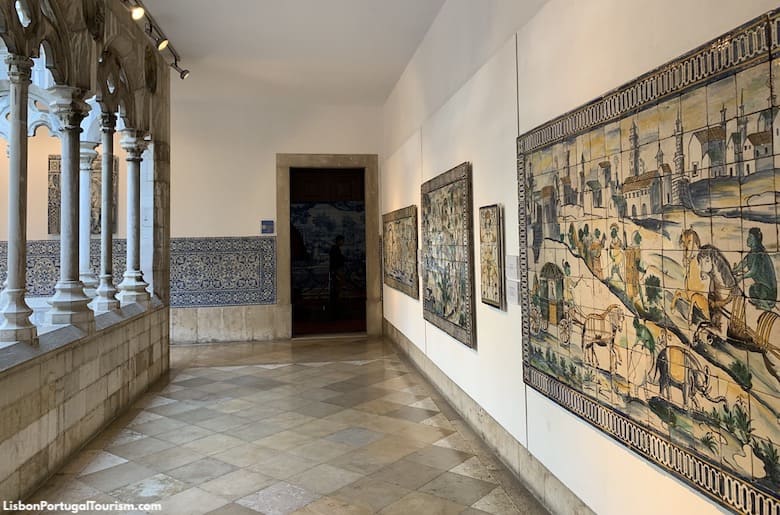
“The Chicken’s Wedding,” an enigmatic panel in the museum's cloister
An entire room is devoted to the showpiece -- a huge 23m(75ft)-long panel illustrating Lisbon before the 1755 earthquake. Dating from 1700 and attributed to one of the first masters of baroque tile art (Spanish painter Gabriel del Barco), it’s something of a panoramic photograph, showing 14 kilometers (9 miles) of the Lisbon skyline at the time. On the 1300 tiles you can see monuments that no longer exist, and others that you may still visit.
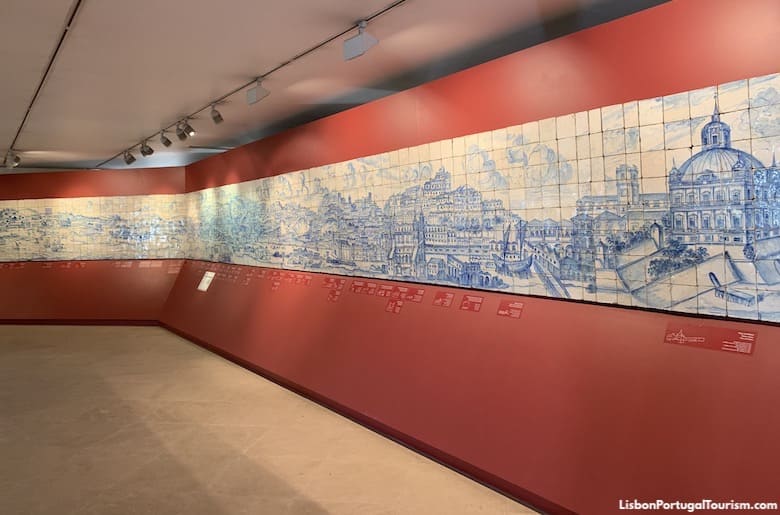
The museum's showpiece -- an illustration of Lisbon from before the Great Earthquake of 1755
The room before it is used for temporary exhibitions, which don’t usually just focus on tiles, and also feature other ceramic pieces, from the past and present.
When you reach the end of your tour, you’ll find the contemporary productions, designed by some of Portugal’s most prominent artists from the late 20th century to the present.
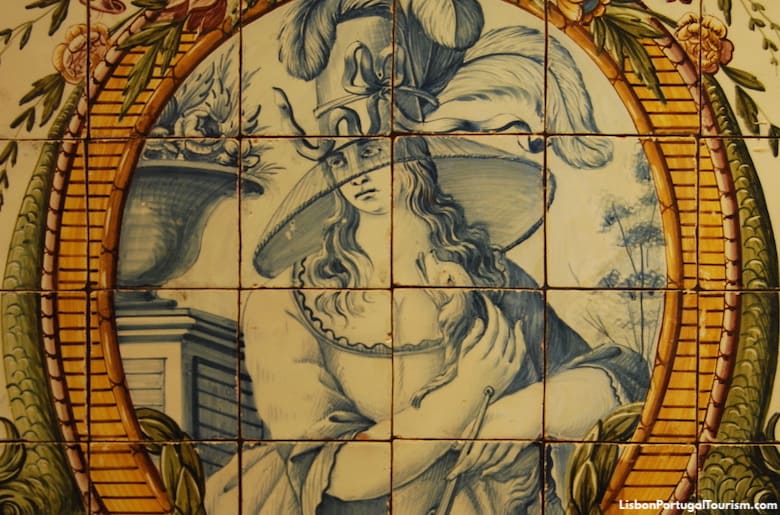
The extraordinary “Portrait of a Lady,” with a transparency effect, so difficult to achieve in tile painting
Before you leave, pass by the lovely restaurant (which is more like a cafeteria) in the former refectory, even if you’re not hungry. It’s lined with some curious tiles from the 1800s, depicting fish and game hanging and ready to be cooked. In addition to a few light choices, it has dishes of the day, which are usually one fish and one meat option, and soup.
If you would love to have some Portuguese tiles at home, check out the museum’s shop.
Due to its location off the tourist trail, it’s easy to overlook this museum, but it’s one of Lisbon’s most interesting attractions. It’s found in an industrial part of the city, with no metro station nearby, but there’s a bus that stops right outside. See transportation information below.
How to Get to the Tile Museum
Bus 759 departs from Restauradores Square and stops at the museum about 15 to 20 minutes later. It passes through Praça do Comércio and by Santa Apolónia Station along the way (its final destination is Oriente Station in the Parque das Nações district).
You may ride the bus for free with the Lisboa Card.
Rua da Madre de Deus, 4
www.museudoazulejo.gov.pt
Admission and Tickets to the Tile Museum
General admission is €8.00 and you may buy your ticket online: Tile Museum Tickets
It’s free with the Lisboa Card.
It closes on Mondays

